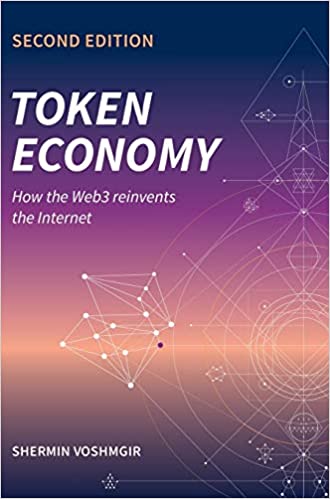Token Economy
A Review of Shermin Voshmgir's Book

You’re not supposed to judge a book by it’s cover. But, that’s what I did. I saw this hoping to learn how people are thinking about mechanism design during token implementation. I assumed it would be heavier on the token engineering side of things (read: quantative). My hopes were not met and my assumption was wrong.
That’s not to say it wouldn’t be useful book for some readers. The blockchain space remains hard to enter because it is fantastically expansive. Consequently, you need a lot of maps to navigate it. Token economy is a low resolution one – something like a whirlwind tour of why tokens matter from 10,000 feet.
It provides,
- An introduction to blockchains and the stateful Web;
- A sketch of Consensus Mechanism and cryptography;
- An overview of tokens, smart contracts, and DAOs; and,
- A description of DeFi including stable tokens, privacy tokens, DEX, lending, and token sales.
Later chapters integrate prior ones through case studies on,
- Asset Tokens
- Purpose-Driven Tokens
- Tokenized Social Networks
- BAT
- TCRs
It concludes with a chapter, “How to design a Token System,” that is 6 pages long.
If you have heard of some of the above-enumerated concepts, Token Economy may help you learn roughly what they are and roughly how they fit together.Here, “rough” isn’t an inditement of the author’s skills in exposition – it’s just the reality of trying to pin down a big and fast moving space. I sincerely don’t know how someone could do a better job. That’s exactly what the dust-jacket promises,
This book attempts to summarize existing knowledge about blockchain networks and other distributed ledgers as the backbone of the Web3, and contextualize the socio-economic implications of the Web3 applications such as smart contracts, tokens, and DAEs to the concepts of money, ecnomics, governance, and decentralized finance (DeFi).
The chapter references are good and will boost your subsequent exploration. However, if this is what you’re looking for, I suggest you read it soon. The revised edition was published in June 2020. That’s recent. But parts were out-of-date by the time of printing.The author is quite explicit about this and warns the reader in the fastest-moving contexts.
…I suddenly realize why there are so few blockchain/cryptocurrency books in the style of O’Reilly.
Update: The author replied to me on twitter, and points out that the book is CC-BY-NC-SA on github. Read more in this post